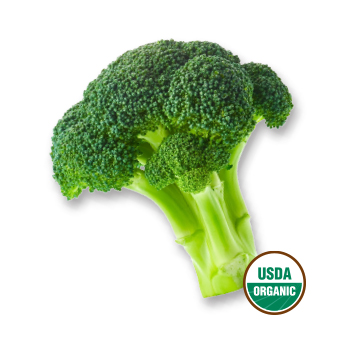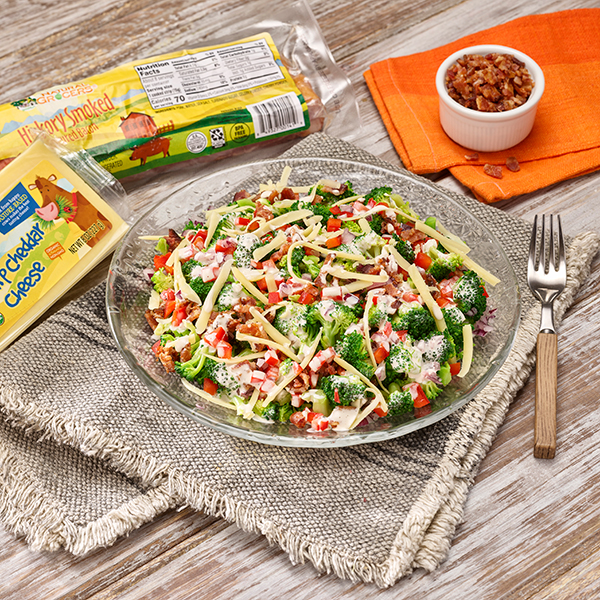


Sign-up for {N}power to get exclusive discounts, newsletters, members-only features, and more!

You may have spent many meals convincing us those green vegetables on our plate were actually tiny dinosaur trees, or even resorted to bribery as we resisted with all the stubborn refusal a kid can muster. It may have taken some time to admit it, but those little green trees are all you promised and more: a rich source of vitamins, antioxidants, and bioactive compounds that are so good for us.
So… you were right. Broccoli is pretty great, and honestly, delicious, too!
Love always, the kids who resisted broccoli

These little green trees of nutritional goodness are touted as one of the cleaner choices in terms of pesticide residues. On the Environmental Working Group’s scale of dirty dozen to clean fifteen, broccoli finds itself in the middle.1 However, this doesn’t mean they’re free of pesticides. One pesticide of particular concern in conventional broccoli is imidacloprid, a neonicotinoid that greatly endangers bees and other pollinators. Neonics are systemic, which means they are not just on the surface, but are absorbed into all parts of the plant, including the roots, leaves, pollen, nectar, and the vegetables themselves. One of the main ways imidacloprid is administered in conventional broccoli farming is by spraying the seeds before planting.2 The widespread practice of coating seeds has been linked to “declines of critically important creatures like caddisflies, mayflies, stoneflies and other aquatic invertebrates” as well as important pollinators like the Western bumblebee.3 4 But growing broccoli does not need to pose these risks to pollinators—organic broccoli seeds are never coated with pesticides. From seed to plate, let’s keep our broccoli free of pesticides by keeping it organic!
In a study to see which varieties of broccoli grow best in Iowa, farmer Rob Faux found that a variety that didn’t grow well for others seemed to thrive on his farm. He explains that growing food is complex, and conditions vary farm to farm; what works in some places won’t work in all. He writes about what he learned from the project and elaborates on the idea of agroecology, “It’s up to us to adapt our agriculture to the land, not our land to the agriculture.”5 The idea is to work with the land, rather than trying to control and manipulate it. For example, the conventional farming practice of monocropping severely depletes soil and requires frequent synthetic inputs like fertilizer to restore the nutrient content. Organic farming uses methods like crop rotation and cover cropping instead to replenish the soil naturally. Brassica vegetables like broccoli require a lot of nitrogen to grow, making them great candidates for crop rotation, which allows the soil to replenish naturally.6
Not that it’s a competition, but broccoli is often considered the healthiest vegetable, or at least one of them! Broccoli is rich with folate, potassium, and other vitamins, including 77 percent of the recommended daily intake of vitamin K to support bone and immune health.7 It is also an excellent source of lutein to support healthy eyes, brain, and skin. This powerhouse vegetable also contains potent bioactive compounds like glucosinolates and sulforaphane, which have well-studied anti-inflammatory, anti-carcinogenic, and antioxidant effects.8 9 And guess what? These compounds are significantly higher in organic broccoli compared to conventionally grown.10 With all these health-supporting benefits, broccoli truly is irresistible! Just be sure to choose organic to get the most out of every little green tree.

This hearty salad is the perfect blend of crunchy broccoli, crispy bacon, and sharp cheddar cheese, all tossed in a rich, tangy dressing. Quick and easy to prepare, it’s a crowd-pleasing side dish that’s ideal for potlucks, barbecues, or even weeknight dinners.



Sign-up for {N}power to get exclusive discounts, newsletters, members-only features, and more!